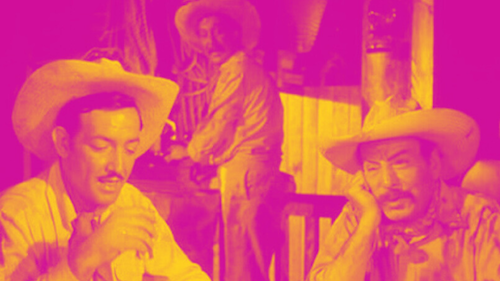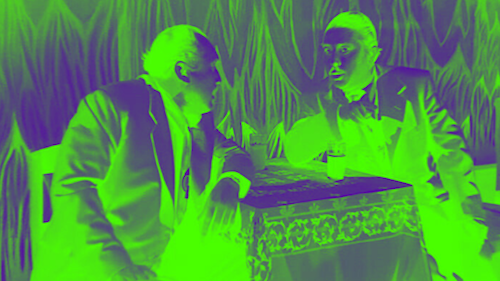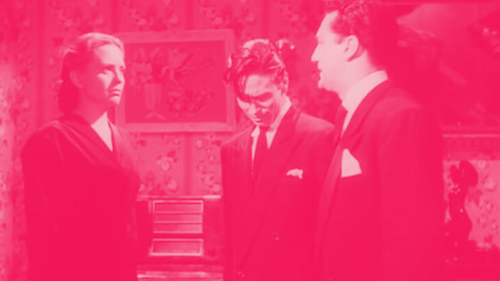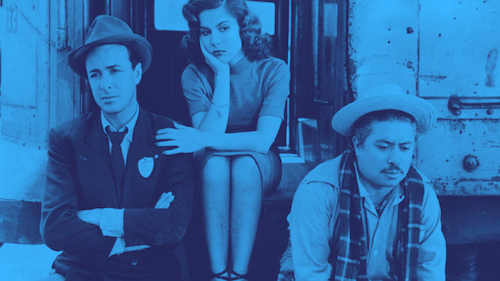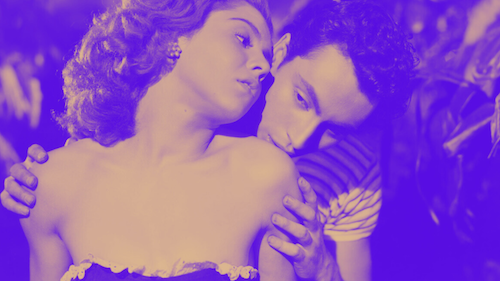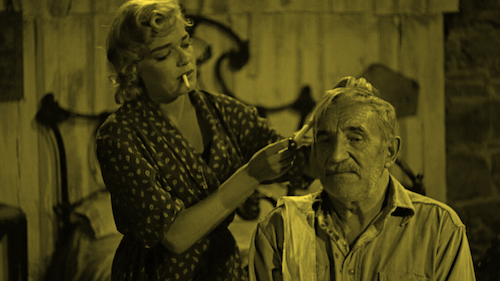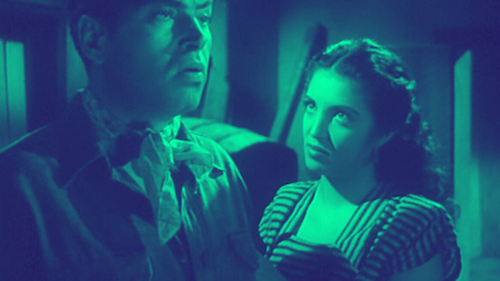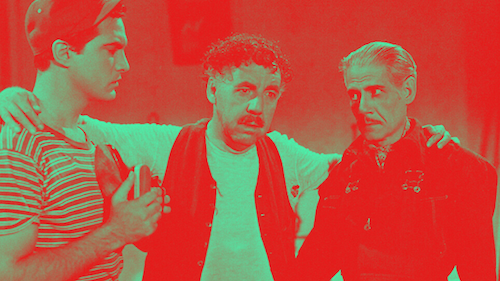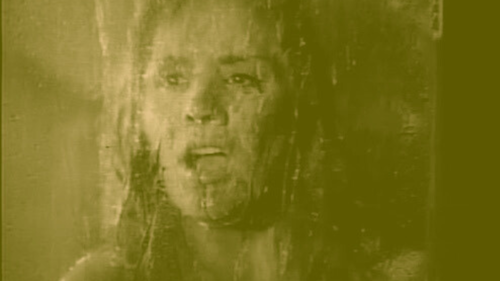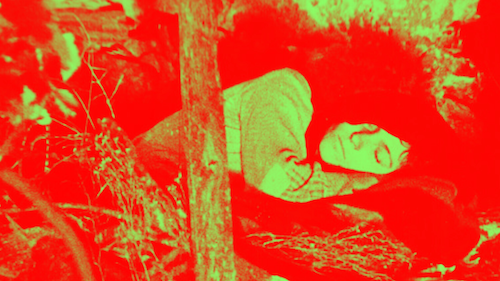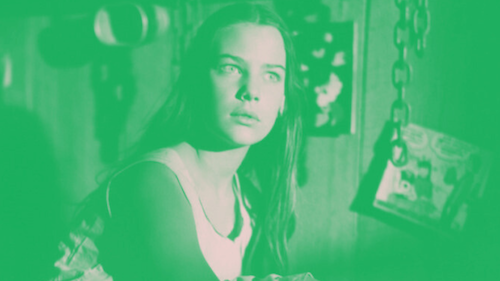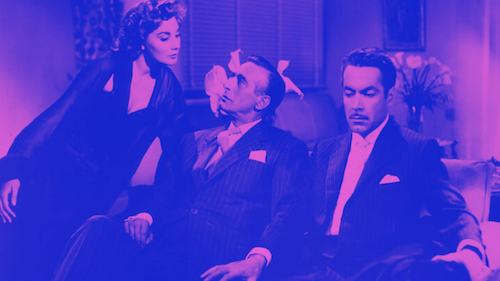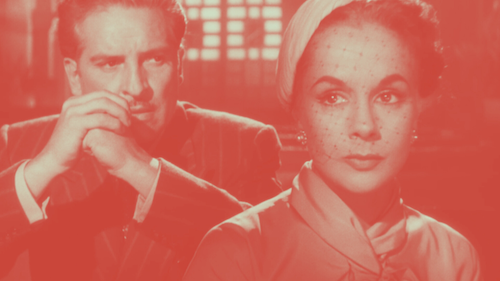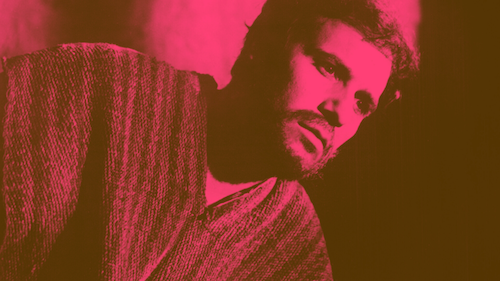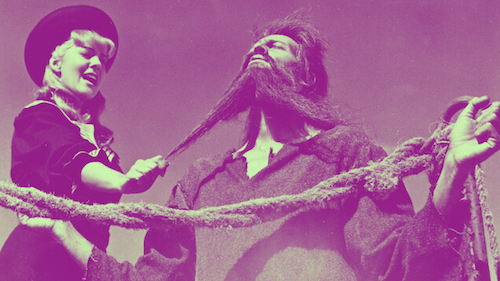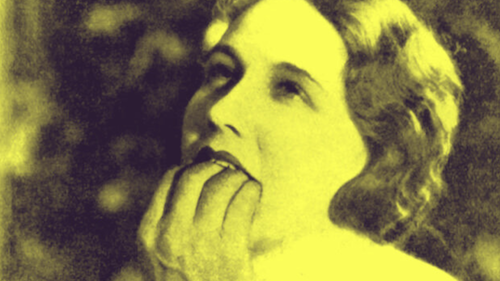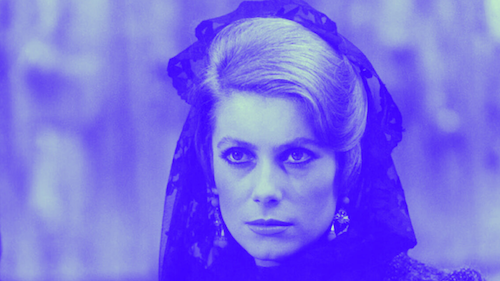Filmography Worship: Ranking Every Luis Buñuel Film
Written by Andreas Babiolakis
Filmography Worship is a series where we review every single feature of filmmakers who have made our Wall of Directors (and other greats)
When you are first bitten by the cinephilia bug, you may watch the iconic, avant-garde short film, Un Chien Andalou, and see it as a Salvador Dali film. Once you are a major film lover and a student of the medium, you recognize it as one of many Luis Buñuel masterworks. One of the greatest auteurs of all time — and one who continuously works with the shattering of the line between reality and dream logic with his surreal narratives — Buñuel challenged what could take place in a film, as well as how a film can even be made or a story told. The Godfather of Cinematic Surrealism, Buñuel has proven to be one of the most influential minds in all of film history. By the time of this article, we lost him forty one years ago to this day, but his legacy will never wither away. With a large number of masterpieces and decades worth of creativity and electricity, I’ve gladly considered Buñuel one of the top directors and a personal favourite of mine who would make my Mount Rushmore (or at least my top ten, but no lower than that).
With the release of Un Chien Andalou, Buñuel and Dali birthed cinematic surrealism. Another experimental silent film, L’Age d’Or, was just around the corner. You’d think Buñuel’s career would have taken off right away, considering he made over thirty films and was getting started in the late twenties, but this is where we reach a blip in his filmography. Born in Spain in 1900, Buñuel initially studied under the guidance of the legendary filmmaker Jean Epstein. Buñuel assisted other directors with their works, until refusing to help one Abel Gance with Napoléon (which would go on to be one of the greatest silent films ever made, but Buñuel knew what he wanted), which ended the road for Buñuel and Epstein’s relationship. From that point on, clearly with something to say, Buñuel became a film critic, further leading to his first works as a director; it was evident that he had a chip on his shoulder from the jump. This kind of abrasiveness leaked into his filmic work, as Buñuel wanted to decimate the bourgeoisie with L’Age d’Or while Dali was too connected with Spain and its politics (including fascist Francisco Franco) to want to create the same scathing film. Dali would publicly reject and insult the film.
True to the tumultuous nature between both artists, Spain itself was shortly in a state of disaster. While Buñuel’s film was being banned and he was under much scrutiny, he resorted to whatever work he could get to get by (including work on other films, making the documentary Land Without Bread, and commercial projects). Meanwhile, Spain’s internal conflicts between the left and right descended the nation into its notorious Civil War from 1936 to 1939. Buñuel acted as a spy for the Republicans, ultimately fleeing to the United States after fears of assassination attempts from the fascist radicals. Even when the dust settled in Spain, Buñuel refused to ever go back. Buñuel got by by dubbing films into Spanish, but his work wasn’t really going anywhere; Dali also refused to help him while Buñuel and his wife were in this exile. His political outspokenness made him impossible to hire anywhere. Eventually, in 1946, Buñuel and his wife would move again, this time to Mexico. Thus began the second phase of Buñuel’s career.
From next to zero films for numerous years to becoming a prolific director to make up for lost time, Buñuel’s famous Mexican era brought forth over a dozen films in a short amount of time, but it felt as though Buñuel was back at square one, given the years of wasted opportunities. Still, he would find his way again quickly enough with the great films that would come in due time. In these works, rooted more in the problems and qualms of the real world than the conceptions of our subconscious, Buñuel would still test the waters with hints of surreality even in his more serious works. Eventually, Buñuel would be uncontained with his anarchistic, brutal depictions of the upper class, Fascist Spain, the Catholic church, and more. His films began to rebel as much as he did, and by the end of his filmography, he was as unhinged as he was when he started.
What we got from years of anguish and turmoil were furious cinematic portraits of unjust societies, sadistic satires that deprived the most powerful people of the world what they withhold from the rest of us (from wealth to even food), and sympathetic observations of everyday working and lower class people who wonder what they did wrong in this world (when, really, it is society who failed them). Despite all the naysaying and the grief he endured, Buñuel remained stubborn and committed to his vision and purpose. As a result, we have a definitive career of brilliance, where even the weakest works are worth appreciating to some degree, and nearly twenty films are close to perfect (or are as perfect as films get). Before we deep dive into the works of a master, I will warn you: it’s about to get weird. Here are the films of Luis Buñuel ranked from worst to best.
33. Menjant Garotes
Despite the high caliber of quality found in Buñuel’s filmography, I have to place Menjant Garotes last for obvious reasons: it’s literally a short piece of documentary, silent footage of sea urchins being eaten. Sure, you can admire how well shot this short is, but there’s not much substance to go off of here, and so it has to come in last place despite how mesmerizing these four minutes of sea urchin preparation and consumption are (and I hope I don’t sound like a loony for saying so).
32. Gran Casino
Gran Casino was the first feature length film Buñuel made upon his return (and in Mexico), so his post-hiatus uncertainty is present throughout this project which otherwise feels “fine” (but, in the filmography of a legend, is easily a low point because of its simplicity, despite the earnest performances and tone). If you really must see this semi-musical, drama, you won’t find anything but a so-so effort which won’t ruin your day, but it’s still the weakest feature Buñuel ever made.
31. La hija del engaño
While in Mexico, Buñuel was churning out films: essentially whatever projects came his way. While a number of films from this period are winners, La hija del engaño is clearly an example of a film he made to get by. Based on the work Don Quintín, el amargao, La hija del engaño (also known as Daughter of Deceit) feels a little air-headed with its logic and typical with its comedy and dramatic tones. It’s simply an average film, which is a crying shame given how inventive a director like Buñuel commonly is, but it doesn’t hurt to watch if you are so curious.
30. Una mujer sin amor
Buñuel would decry Una mujer sin amor as his worst film he ever made; while I don’t fully agree, given the placement of the film on this list, it’s not difficult to see how he would feel this way (I at least consider it one of his worst). It’s far from a bad film, but it feels like what Buñuel professed it to be: a direct job where he put the words he was given to the big screen, and that was that. It’s not all that flawed compared to the films that are lower on this list, but this film is just as forgetful.
29. La ilusión viaja en tranvía
The quality of the films here now leap to “pretty good” until noted otherwise. La ilusión viaja en tranvía feels indebted to the Italian neorealist movement with its fable-like structure, dialed down scope, and pure storytelling ways. Even though this film is as basic as a lot of the other films that came out around the same time (including the very ones that have been ranked lower), I feel like Buñuel’s empathy and commentary shine through more strongly here to reasonable effect.
28. Subida al cielo
A rare straight-up comedy by Buñuel, Subida al cielo is similar to La ilusión viaja en tranvía with its use of a method of transportation to tell a story (here, it’s a bus), but otherwise it is far more light and silly in tone with what it is trying to say (more of a personal take on ethics and decision making, as opposed to a society-wide statement on the state of things). It is nice seeing the fun side of Buñuel when it happens.
27. La mort en ce jardin
We’re still seeing fairly direct films by Buñuel at this point on the list, but at least La mort en ce jardin is straight forward in a reasonable way: an adventure film with a through plot and a quest that is easy to follow. Both parts an experiment by Buñuel detailing what such a film would look like by the typically challenging master and a statement on Fascist-stained Spain, this film details the corruption of power and the punishment of hard workers whose lives are on the line.
26. Cela s'appelle l'aurore
We’re still in Buñuel’s prolific, Mexico era, and looking at some of the director’s most orthodox films. Having said that, Cela s'appelle l'aurore is a beautifully moving work and an unusual instance where the director aimed to move his audiences rather than direct his societal frustration and pessimism through his art. Even though there’s a political allegory embedded here within the concept of unconditional devotion, this film still stands out as a poetically lush experience in a filmography which is usually intense or trippy. It’s no wonder why Buñuel was so proud of this outlier.
25. La fièvre monte à El Pao
One of the larger allegories of Buñuel’s fifties films, La Fièvre Monte à El Pao stages a hypothetical situation — where a corroded society kills their ruthless leader (one can only wonder why Buñuel would make such a film after his various exiles, said no one ever). Occasionally thrilling and always with something to say, this effort by Buñuel fits right in with his other ferociously satirical and blunt works.
24. Robinson Crusoe
Buñuel’s version of Robinson Crusoe was Academy Award nominated and beloved when it came out. As good as it is (and it is at least quite something, given the heart and magnitude of Buñuel’s rendition), this is still light stuff given Buñuel’s strongest material. Still, driven by a committed, booming performance by lead Daniel O'Herlihy, Robinson Crusoe may be one of the easier films in Buñuel’s filmography to watch (with enough purpose to do so).
23. El río y la muerte
When you experience the qualms of a civil war, the concept of a divided nation will likely remain permeated in your mind. This spills out into Buñuel’s film El río y la muerte: about two feuding families responsible for the bloodshed of the other for years and years. This depiction of generational hate, the power to overcome cyclical narratives, and a parable-like realization is quite strong for this time period in Buñuel’s life: one where he was tossing out many films with a handful that would stick stronger than others.
22. Abismos de pasión
You know that Buñuel is going to bring something special to Emily Brontë’s legendary novel, Wuthering Heights; his adaptation of the same name (or Abismos de pasión, as its official, Spanish title) is not as faithful of a transfer as others have been, but it is authentically surreal and plagued by regret and sin, like many of Buñuel’s finest works. I can’t pretend that this is the strongest version of the iconic story, but you know you’re in for a treat when Buñuel tries his hand at this gothic tale, and he doesn’t disappoint at least with his vivid imagery and the weight of regret present throughout this release.
21. El bruto
We’re not out of the Mexican era yet (Buñuel really did release many films in such a short period of time), but we’ll be stumbling upon some of the stronger films of this period that aren’t the outright occasional masterpieces he would make during this time (more on those much later). Of the typical works from this era, El Bruto is a step in the right direction: a dramatic representation of what one’s worth is being attributed — or misattributed, rather — to what they do for a living versus how they respond to fellow citizens. With commentary as poignant as ever (yet it resonates more strongly here than it does with a handful of the other Mexican era films ranked lower), El Bruto is a more complicated release from this time period that shines amongst many of its peers.
20. El gran calavera
We’re taking another leap in quality and have reached all of the great films in Buñuel’s career. We start off with a late forties film (no less) with El gran calavera: a statement on the illusion of wealth. A family of leeches is forced to figure out the rest of their lives on their own once their wealthy father pretends to be broke: an early sign of the many eat-the-rich films that Buñuel would spearhead later on (albeit a safer, more light hearted version, and maybe a good place to start for those of you who don’t want to dive into the more brutal Buñuel films right off the bat).
19. Susana
The “weakest” film in an unofficial trilogy where Buñuel follows a titular female protagonist and their journeys through a sexist, corrupt society is still a fantastic watch. Susana is all about going against the grain: from viewing the world through the eyes of a girl forced to attend a reformatory, to challenging the ways of “order” in civilization and religion, with both topics being male driven and imbalanced. Susana’s reality begins to shatter alongside the film’s (and, as a result, our own), which is no surprise by Buñuel’s standards but is still a welcome and necessary trait in a film about how the systemic toxicity of society can drive us insane.
18. Land Without Bread
If Buñuel was a master of surreality and the subconscious (so, in other words, that of which is not a part of our reality), then a project like Land Without Bread — his first sound film, and his only release between L’Age d’Or (1930) and Gran Casino (1947) — is an exercise in how brilliantly the auteur toys with the concept of what is real. An ethnofiction documentary that skews the talking points it wishes to make, Land Without Bread is both an important piece of commentary given its subject matter (the impoverished region of Las Hurdes, Spain) and a reminder that film is a personal, artistic medium that is susceptible to bias and hyperbole. One must always think about what they watch, even — and especially — if it is a documentary.
17. The Milky Way
Buñuel faced a quest towards the end of his career to “search for truth” through his films; this would result in what many would consider his most absurd, unusual, and unorthodox films (like The Phantom of Liberty). The first such film — and his last to be released in the sixties — is The Milky Way: an adventure that transcends space, time, and mindset (this is a far more “literal” search for truth, as we actively follow protagonists on a mission, but, even so, Buñuel’s truth is a highly strange one, which surprises no one). While a weaker effort from Buñuel’s most unhinged latter years, The Milky Way is a great starting point that can be seen as a director — who was already daring — testing the waters to see how much further he could go.
16. Diary of a Chambermaid
Buñuel and fellow filmmaker Jean-Claude Carrière collaborated on this adaption of Octave Mirbeau’s The Diary of a Chambermaid (far from the only one, including Jean Renoir’s 1946 version which is my favourite, and Benoît Jacquot’s film years later in 2015). Buñuel’s answer to the taboo source material is a strong one, as he forgoes his usual surreal satire and imagery to make a hostile commentary on the bourgeoisie; the film never hides behind bits of fantasy, and you’re forced to face its uncompromised subject matter head on. As great as this film is (and it is really good), it feels like only the starting point for Buñuel and Carrière who would team up again for a film that feels like Diary of a Chambermaid but vastly stronger: Belle de Jour.
15. La joven
Buñuel’s best English language film (although he only had two), La joven, or The Young One, is the kind of story you feel like you’d read about in high school for English class: a fable featuring three dissimilar characters (a young girl, a Black jazz musician on the run, and a racist, creepy game warden) trapped on an island together with the tests of morality being put forth. This experiment works very well as Buñuel pushes his views against the backwards structures of society in a story that is far less cryptic than his more challenging works. La joven is an underrated film by someone who has many cherished works, so look forward to this underseen title if you feel like you’ve seen all that Buñuel has to offer before getting around to this title.
14. Ensayo de un crimen
On the topic of underrated Buñuel films (a term that rings even more true here, as we’ve reached what I would consider the stretch of masterpieces from this point out on this list), Ensayo de un crimen, or The Criminal Life of Archibaldo de la Cruz, is a grizzly, dark comedy that is as sadistic as the director ever got. He features a sexist serial killer: a psychopath who only goes after women. See it as the grace of God (Buñuel plays the role of the higher power in his position as director, here) or the fortunes of fate, but every woman the titular criminal goes after dies before his plans come to fruition. As hilarious and twisted as this film gets, Ensayo de un crimen is quite a bold take on male perversion and addiction: the relentlessness of men who are never told “no”. This film is as bleak as Buñuel gets, and is a must for any fan of his.
13. Él
Not all of Buñuel’s prolific, fifties, Mexico period was rough, and we’re going to see a handful of sensational films that came out of an era of trial and error. First off is Él: a drama featuring a possessive, controlling, elite husband and how he flounders and implodes when he feels as though he is losing a grasp of his power. While other Buñuel films may be a bit more layered and experimental with their depictions of wimpy, idiotic men in authoritative positions, Él is quite blatant and upfront: this is what it looks like when those who are given in too frequently don’t get their way.
12. Nazarín
Then there’s Nazarín, which, similarly to many other Buñuelian works, shows the damage one controlling person can have, but what makes this film fascinating is the blurred line between good intentions and misguided notions. As opposed to depicting a tyrannical, privileged monster, Nazarín follows a priest who is trying his best to follow the word of God in a village that tests him. Unlike some of Buñuel’s other takes on religion, Nazarín is a little more sympathetic (while still being as stern as ever), as the film understands those who need guidance in their life but never loses sight on the one sided relationship the protagonist priest has with his faith.
11. The Phantom of Liberty
The penultimate film in Buñuel’s career is The Phantom of Liberty: one of his most insane efforts. An avant-garde take on ethics via experimental vignettes that barely connect with one another (and are even considerably non-linear), The Phantom of Liberty feels like a riddled mind plagued with visions and fears that collide together in a crucible of dread. These aimless thoughts will make you laugh as much as they confuse and perturb you. While I think Buñuel has handled cinematic anarchy even better than this, The Phantom of Liberty is still an exquisite dive into delirium that you won’t believe you’ve seen even minutes after you’re done your first watch.
10. Simon of the Desert
All Buñuel needed when he was operating at his best was a strong idea that he could run away with. Case in point: Simon of the Desert, which is an exemplary featurette that is simply unforgettable (and an even more powerful example of what Nazarín was aiming to accomplish with its take on the thanklessness of complete devotion). As Simon aims to give up everything to be closer to God, we follow him and his hallucinations as he is tested again and again. We wonder how much further all of this dedication is going to go, until we reach the umpteenth tribulation: a climax which pulls the rug from underneath us viewers (literally no one can predict how Simon of the Desert ends). If there was ever such a thing as a cinematic parable (even if it is a rebellion against religion as opposed to a support of it), Simon of the Desert is what it would look like.
9. L’Âge d'Or
If Un Chien Andalou was the starting point of Buñuel’s career, then L’Age d’Or was proof that it was not an artistic fluke (it also shows that Buñuel is as responsible, if not more, for the former short’s experimentations than Salvador Dali, who also cowrote L’Age d’Or but fell out of the film’s production after disagreeing with Buñuel’s depiction of the bourgeois). As the surreal insanity of Buñuel’s short is brought to the length of a feature film in L’Age d’Or (his last silent project of any sort), it’s clear that the director’s disdain for privilege and obsession with comeuppance (be it in this or any other reality) was there from the very start. L’Age d’Or feels relentless even by today’s standards: imagine the hysteria that ensued when this was released in the thirties.
8. That Obscure Object of Desire
Buñuel’s final film ever, That Obscure Object of Desire, is an exquisite swansong which was proof that the director never let up his artistic integrity or endless visions. As we follow a man in his twilight years chasing after youth, he falls in love with the character of Conchita: a fascinating character given Buñuel’s genius decision to have two starkly different actresses play her at the same time (there’s no jump in time or alternative reality: these two women embody the same person). We get a powerful look at objectification and the blinders we give ourselves when we chase desires, be they love, excitement, youthfulness, and the like. Logic never enters the equation. As That Obscure Object of Desire concludes with a damning final image, we see Buñuel’s career finish in hindsight with the same kind of brashness that he intended for this film alone: a reminder of an artist who was forever pushing new ways for stories and themes to be told.
7. The Exterminating Angel
If The Exterminating Angel was only received enough upon its release, it has grown to become one of Buñuel’s most beloved films, perhaps due to its universal take on the deprivation of the fortunate for a short little while. As a dinner party involving only rich people commences, they find that they can never leave; as a result, they begin to starve and go insane. I suppose this is Buñuel’s way of forcing the elite to live in this sole setting — one that most people on Earth will never experience — forever and creating problems within wealth. This film is inventively angry, and it takes a lot for audiences to find both comedic relief and empathy within the distress of awful people; The Exterminating Angel challenges us on what points are too far in this surreal satire.
6. Un Chien Andalou
Arguably the most well known Buñuel film thanks to all of the FILM 101 curricula that introduced cinema students to it, Un Chien Andalou is also one of the greatest short films of all time. On first watch, a young cinephile may adore just how bonkers and strange this film is (I don’t think I need to bring up how unforgettable the eye slicing scene is especially because of how shocking and unpredictable it is); perhaps there’s a certain level of fascination surrounding films that somehow channel what our dreams feel like. Further watches of Un Chien Andalou reveal its deeper intentions, and the kinds of themes Buñuel would chase through his entire career, particularly the fascination with how dreams unite all of us, from the struggling working class to the wealthy elite. Here’s a new nightmare for us in cinematic form that has brought us together once more. What do we make of it? We each have our own takeaways for the rest of our lives.
5. Tristana
The second of three films on this list to feature a female protagonist having to navigate the rough environment of male dominated worlds, Tristana is the perfect bridge between his sixties works (which introduced far more surrealism than the majority of his fifties releases) and the rest of his seventies output (which was as chaotic as his films ever got). Tristana follows the titular character (a second partnership between Buñuel and star Catherine Deneuve after Belle de jour) and her life with a much older man who manipulates her in his favour. We leap years into the future throughout the film until the final montage which sends us back to the start: a depiction of a life changed by selfishness and perversion which doubles as life flashing before the eyes of a character who has been conditioned to feel differently about what we see.
4. Los olvidados
It makes sense that there would be one near-perfect film amidst the many Buñuel released in the fifties; it just happened to be the first film to kick the decade off. Los Olvidados, or The Young and the Damned, brings us to a slum of Mexico City that has descended into chaos and aimlessness. This is a place that God, the government, and the rest of the country has given up on; Buñuel wishes to give it its proper dues. The result is a film that is less invested in surrealism than your typical Buñuel feature but feels just as detached from our own realities: a classic of social realism that can easily go toe-to-toe with what Italy was releasing at this point. As time goes on, Los Olvidados and its dedication to sharing the truths of the neglected resonates with viewers; it’s no wonder why this film stands tall for many Buñuel fans no matter how many excellent films the late director made.
3. Belle de jour
If Diary of a Chambermaid was successful, then Belle de jour is untouchable when it comes to exploring eroticism within the problematic, scrutinizing confinements of society. With a career-best performance by Catherine Deneuve, we watch the daily life of Séverine as she makes ends meet as a woman of the night; her necessity to get by is the past time perversion of men, and their fantasies are sadly her reality (yet another way Buñuel blurred these lines). Belle de jour isn’t willing to just settle with this concept as it goes the distance with its fantastical takes on desire, to the point that us viewers are left questioning what we are even seeing. Many people with addictions do not know how to separate their daydream scenarios from how they behave, and Belle de jour is a heartbreaking look at what is unfortunately far too true to many.
2. Viridiana
Of Buñuel’s films named after female protagonists who are forced to get through the tortures of male-driven society, Viridiana is unquestionably the best (which says a lot given the high quality of the other releases). In ways, I think Viridiana is actually Buñuel’s best film because of how unique it feels amongst thirty-odd other films, as in it is somehow the bridge between his neo-realist works of the fifties and the surreal explorations that came the following decade. As Viridiana — a nun in training — tries to be clean in the eyes of the Lord, the men in her life decide that she is to be objectified and decided upon as they see fit. This idiosyncratic take on perversion and immorality is a Biblical take (of sorts) on how faith can easily be used to gaslight and manipulate situations and others. While far from the easiest watch, Viridiana is powerfully twisted, horrifying, gorgeous, and even comedic at times. It’s as daring as films get.
1. The Discreet Charm of the Bourgeoisie
While I do consider Viridiana Buñuel’s best film in ways, I have to admit that The Discreet Charm of the Bourgeoisie is his magnum opus in enough ways that give it the edge (but consider these two films as neck-and-neck as they get in a director’s filmography). If Viridiana was audacious with what it was showing, The Discreet Charm of the Bourgeoisie is insanely daring as a concept in such a fundamental way: all we are doing is watching a dinner party of the upper class try to actually take place. These people want to eat, and they are deprived of their nourishment in simple ways at first (a misunderstanding of when the dinner is to actually take place, for instance), and the reasons for pushing the dinner keep getting more and more ridiculous (I’ll never forget the first time I saw the firing squad sequence, as I nearly fell out of my chair laughing over the hyperbolic extreme the film was willing to go to).
As we dip into the subconscious underbelly of society (a hivemind of frustration with the imbalances of civilization, a fascination with mysteriousness and enriched artistry, and the shared confusion with what our minds tell us while we are asleep), The Discreet Charm of the Bourgeoisie strips the entitled of their food while it feeds us with some satirical catharsis and abstract empathy. This is as kooky and absurd as film gets, and a precursor to the highly popular eat-the-rich genre that has developed over time. As funny as it is peculiar, disturbing, and fragmented, The Discreet Charm of the Bourgeoisie is an exceptional film of the avant-garde movement. While other filmmakers see ambition as the scope of a film, Luis Buñuel became ambitions with how deeply into the psyche of human beings he could get, and there aren’t many films like The Discreet Charm of the Bourgeoisie: an intentionally ridiculous affair that won me over quickly and changed how I perceive films shortly afterward. It is Buñuel’s top masterpiece amongst masterpieces: a perennial look at surrealism and black comedy in film, and how the most unusual and silly works can still possess some of the greatest truths you may find in a motion picture.
Andreas Babiolakis has a Masters degree in Film and Photography Preservation and Collections Management from Ryerson University, as well as a Bachelors degree in Cinema Studies from York University. His favourite times of year are the Criterion Collection flash sales and the annual Toronto International Film Festival.



